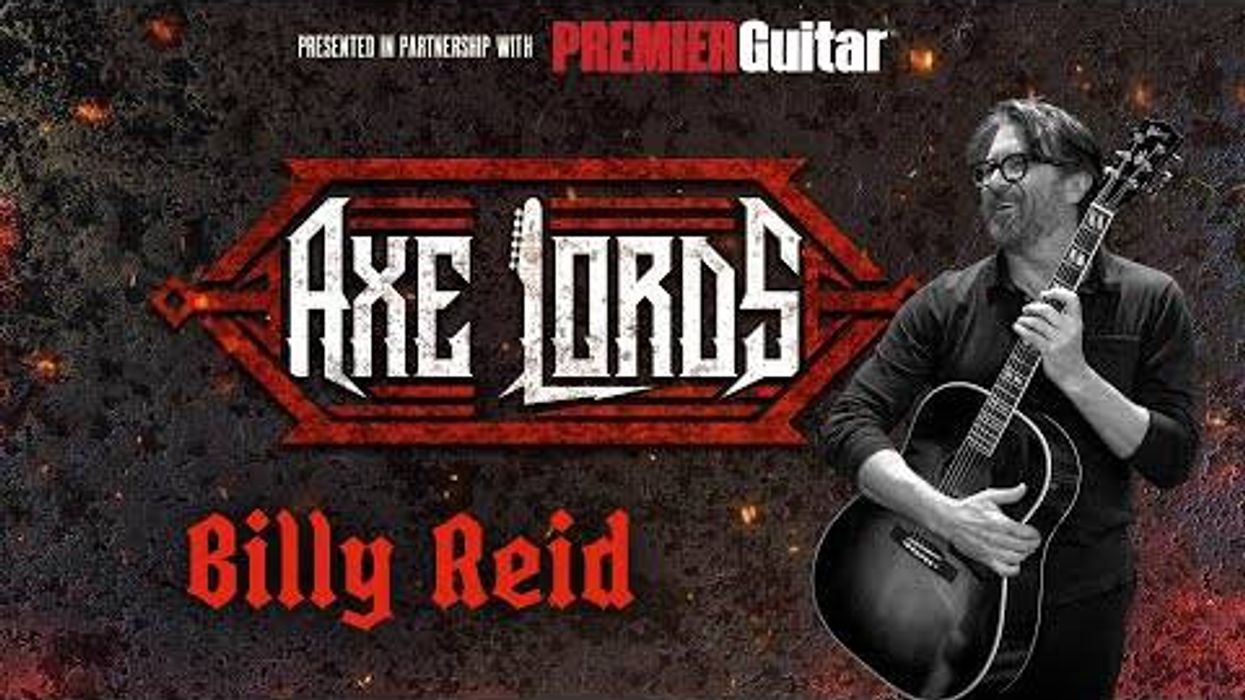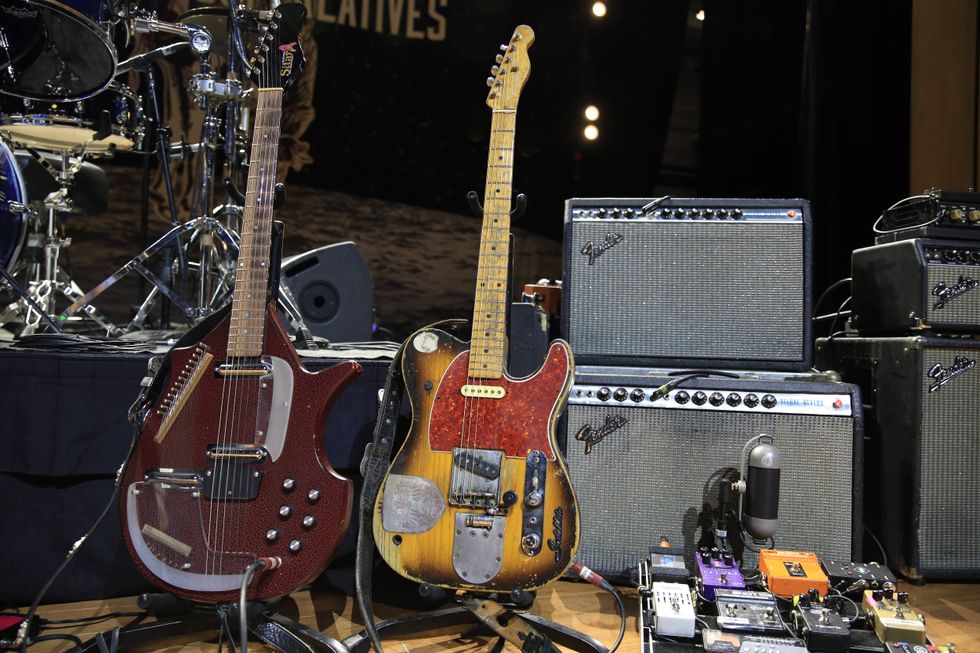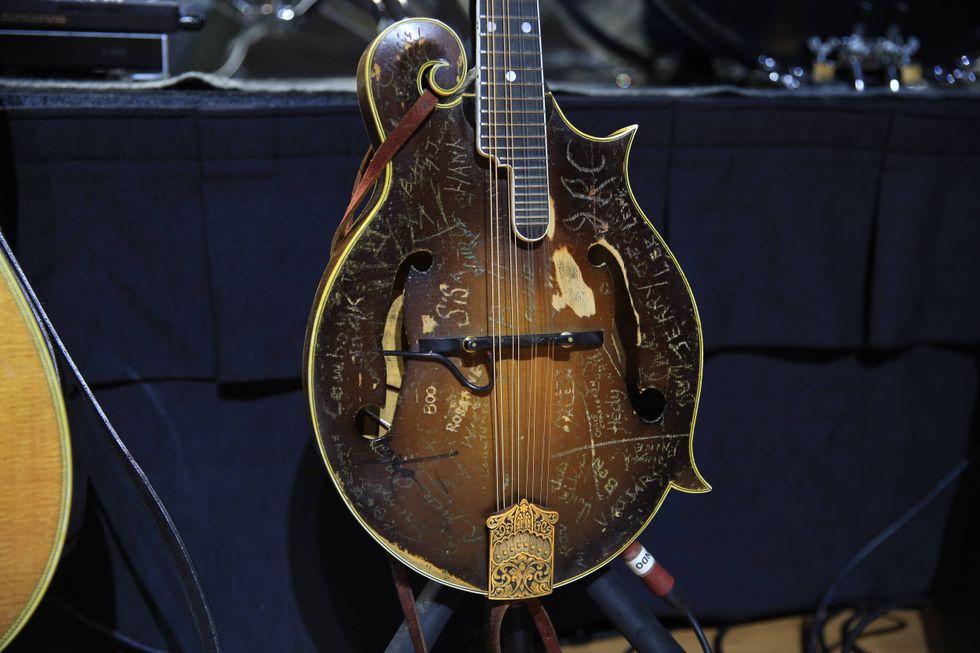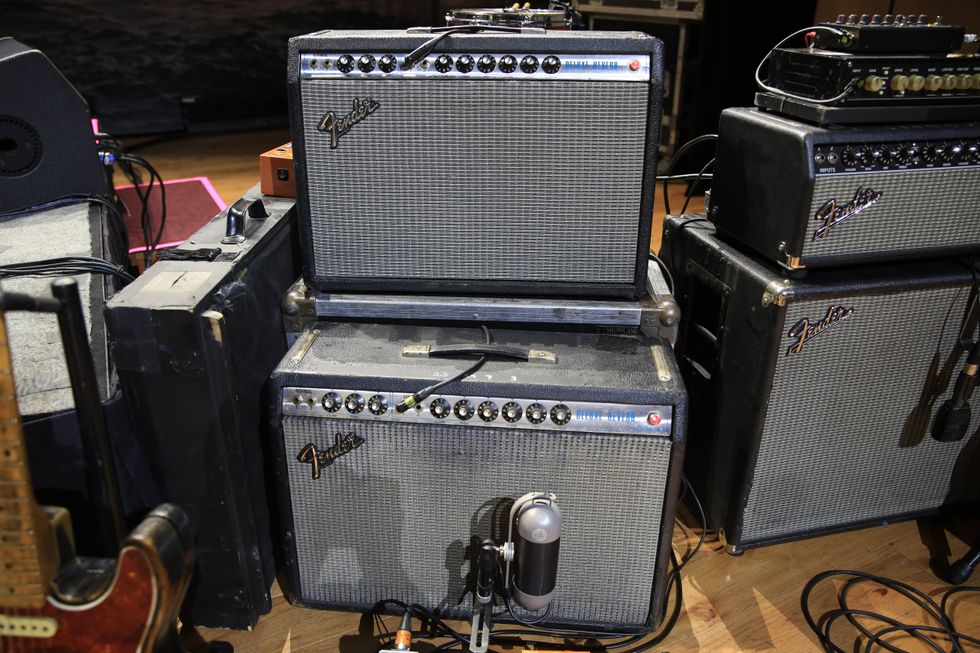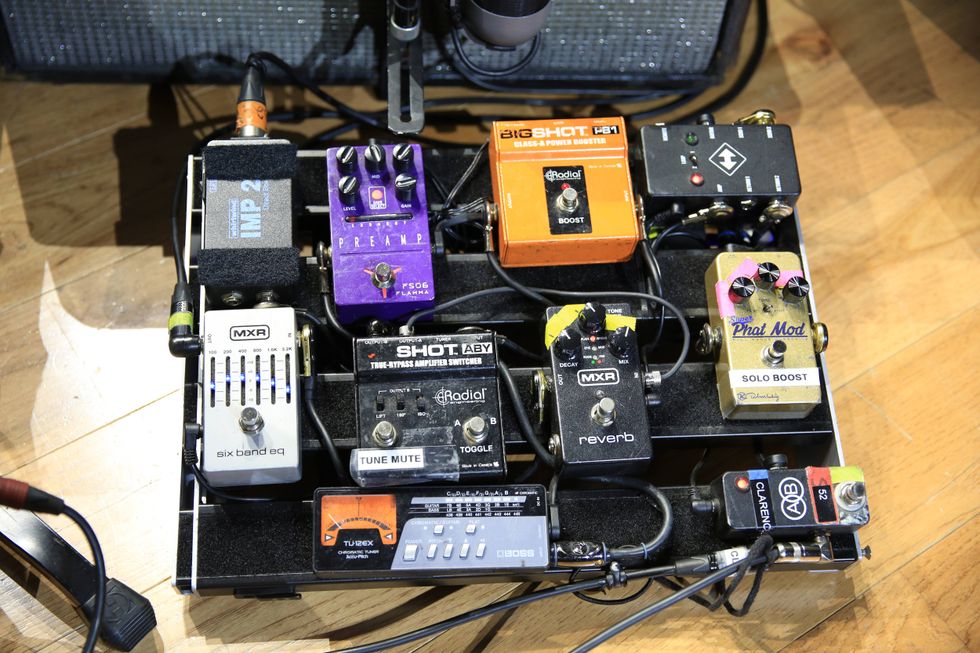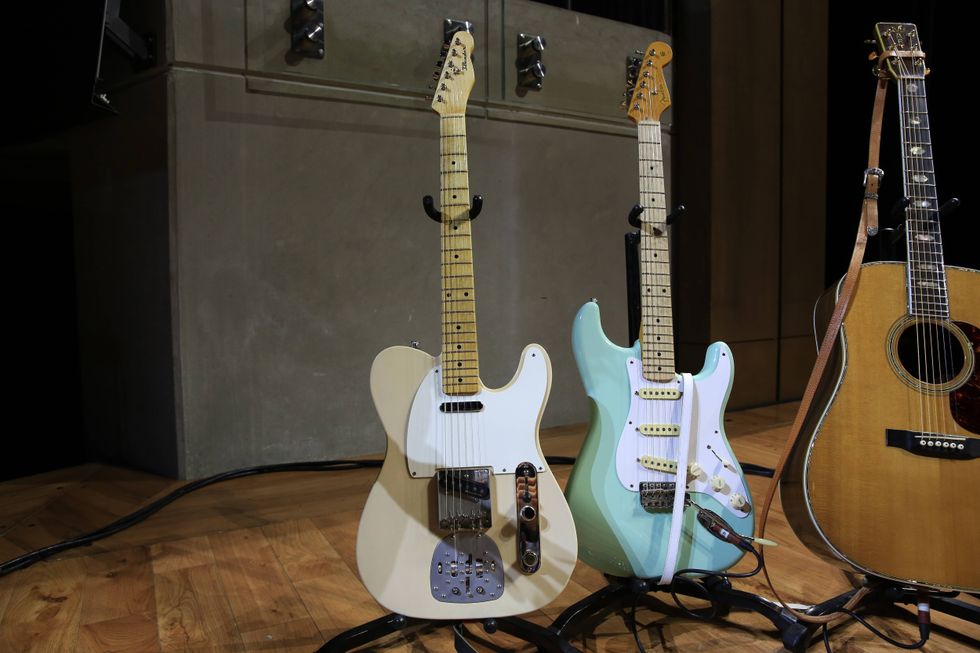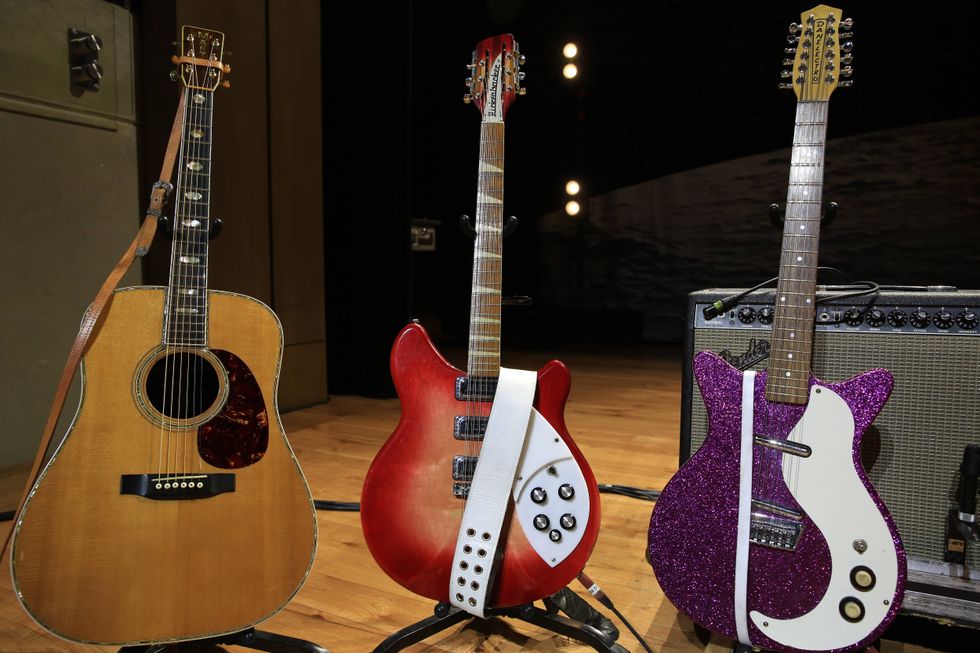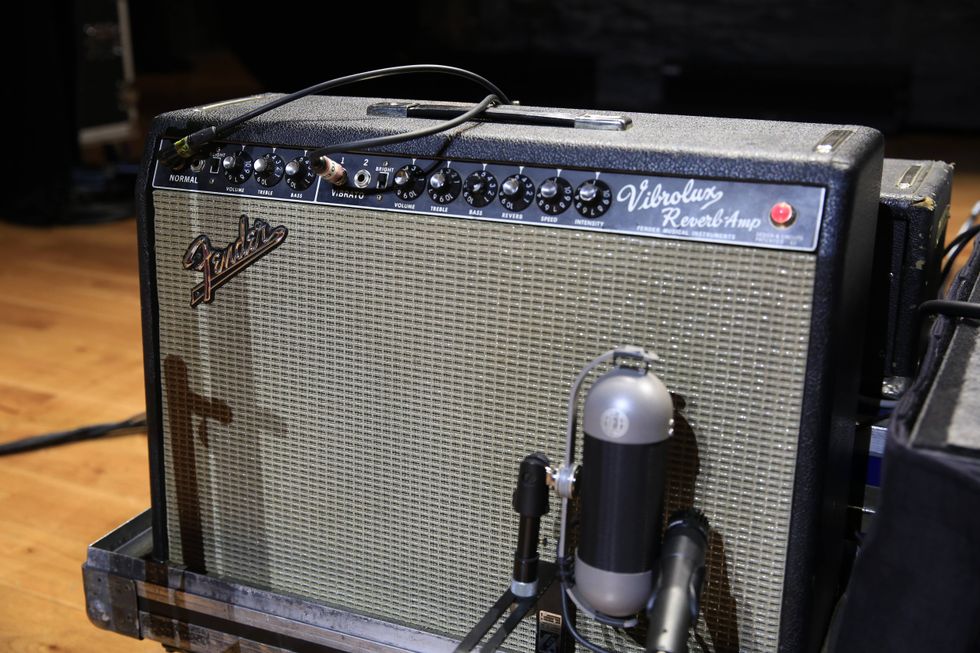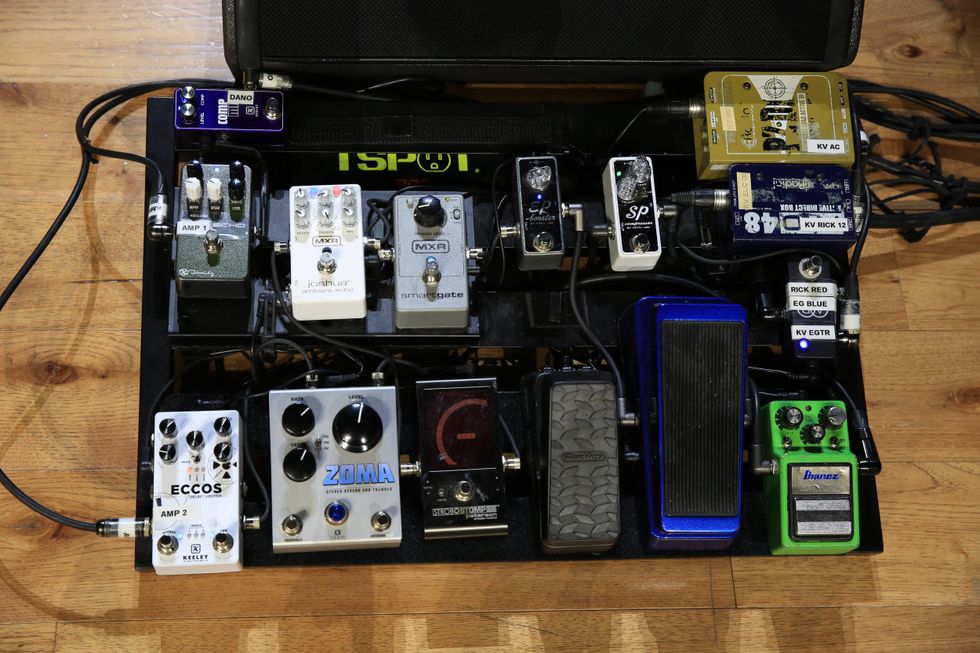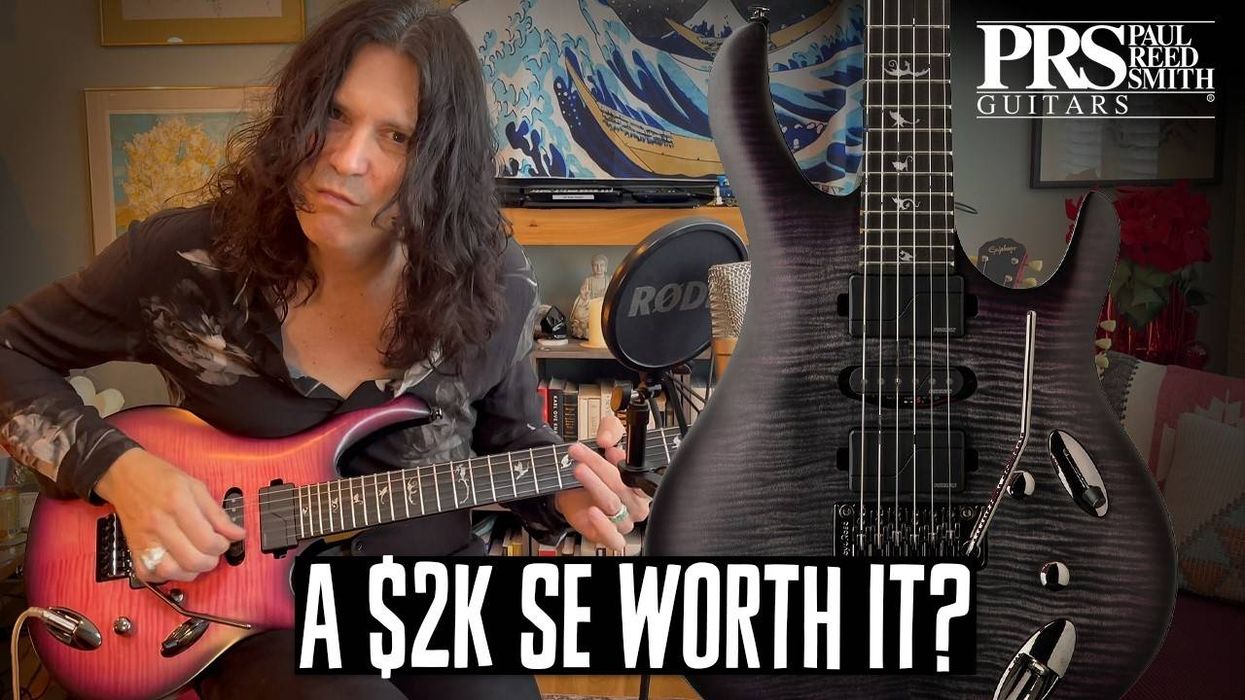| <<<Back |
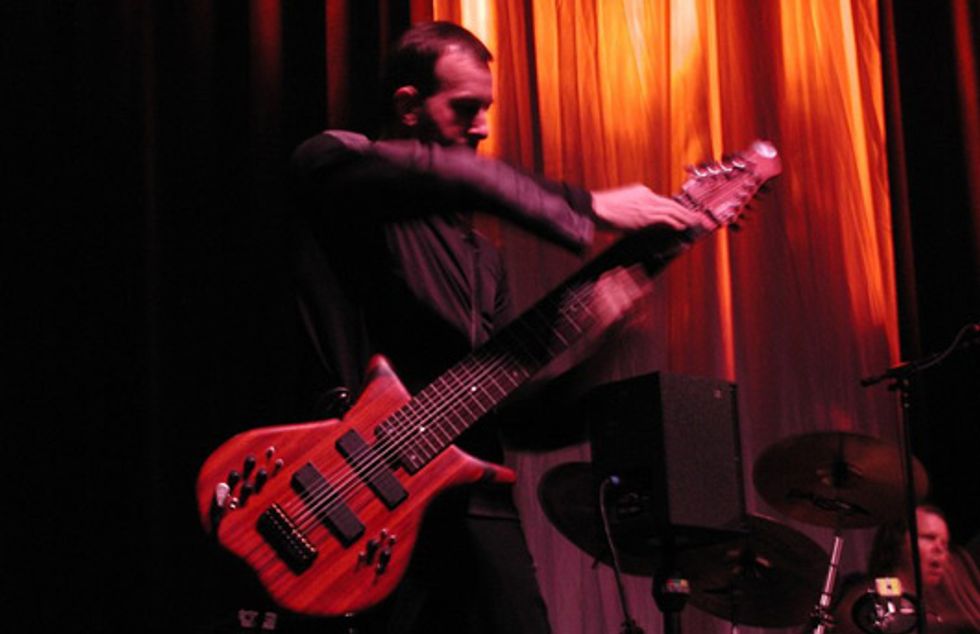
For one thing, he rarely used the instrument’s MIDI capability, and has now abandoned it entirely, preferring to shape the sound through his physical relationship with the instrument and carefully selected processing. “I never used MIDI that much,” he says. “ I used it some with King Crimson and ‘ProjeCKts,’ to make a fake feedback. I would take a flute sound up an octave and route the regular guitar sound and this flute sound into my distortion. I could fade up the flute and it would sound like I was going into overtone feedback. Now I’ve found a way to get that effect with pitch-transposition plug-ins.”
In fact, as a musician who travels the globe from his Seattle base, he is always looking to minimize the weight and bulk of his gear. You won’t find him tending a huge array of pedals and effect buttons. “I’ve got to put the thing in a case and carry it around the world,” he says. “I’m always looking for ways to make my gear smaller, cheaper and more convenient to move around the world. I am almost entirely away from using amps. I’ve used full-range Euphonic amps – my bass-side goes up into the guitar register. With Crimson I used SWR bass cabinets. But pretty much I’m a direct guy, as much as I can be – I like to trim down the rig so that it’s small enough that I can get on an airplane and fly anywhere with everything I need.
“I use Native Instruments software on my laptop for the melody side. A little compression to squeeze the dynamics. I send the guitar side into the laptop and the bass side into a little Raven Lab bass preamp and then out to the house. And I carry a couple of fuzzboxes on the bass side for live performance.”
Over the years, Warr Guitars has built Trey a variety of instruments, including a streamlined eight-string mono version he used on the King Crimson “ProjeCKts,” and a nylon-stringed, fretless piezo instrument – with no magnetics at all – that he has used with King Crimson and on his new CD.
Although there has been a close collaboration between Trey and Mark in product development, there is also a sense that he does not receive special treatment. When you visit the Warr Guitars website, you will see sections devoted to the various “lines” of instruments – the Artist Series, the Artisan Series, the Trey Gunn Signature Series, the Phalanx Series – but Warr Guitars are not off-the-shelf instruments, shipped from a mass-produced standing inventory. The company is still small enough – with a staff of four – that each instrument is custom-built to meet the exact specifications of each musician, just like Trey’s instruments are made for his.
The choice of woods, electronics, string design, and a variety of other elements are at the discretion of the individual. Mark not only collaborates on custom designs, but every customer gets the same attention to detail and quality under Mark’s direct supervision. “I make sure every instrument is top-of-the-line,” he says proudly. “We look through a thousand board feet of wood until we find enough wood for a single neck. So we don’t just grab a bunch of maple, or whatever we use. We don’t have to buy that much to get it, but we have to look through that much. It’s a very time-intensive process.”
The Challenges of Warr
The Warr Guitar is developing in two directions simultaneously: The design and engineering is progressing at the same time that an ever-growing community of musicians is exploring and expanding its playing techniques and stylistic possibilities.
Much of the Warr design and engineering is proprietary, accumulated through Mark’s many years of designing and building experience, but the peculiar challenges of producing top-of-the-line, stereo touch instruments with wide dynamic and pitch ranges are constants. For example, graphite reinforcement and dual truss rods enable the massive fingerboard to cope with the tension of so many strings.
“One of the original challenges of these stereo instruments was getting isolation between the two sides,” Trey explains. “They have separate outputs and separate pickups, but the strings are very close together so if the bass side is bleeding into the melody side, the effects on one side are heard on the other side.” Part of the solution to this “cross-talk” lies in electronic developments in the pickups, but Mark also employs high-end audiophile techniques in the engineering of the instruments’ bodies.
Another challenge is to achieve a consistency of sound in all parts of the instrument. Output must be somehow balanced for each string. Trey’s strings range in gauge from 9 – the “light” gauge for the traditional guitar high “E” string – to 128 for the heaviest bass string. “The little strings are such a small sound compared to the bass side,” he points out. “You have incredible dynamic range, but you can’t output it like that because you need the high strings to sound as loud as the low strings. That’s quite a challenge, but he figured out how to do it.
“With all traditional instruments, the sound comes from the right hand – how they use a pick, or the fingers or the thumb. We’ve taken that element away with touch guitars. There aren’t that many options for articulating a note. So that’s another obstacle we were working with – I was always wrestling with a really clear, fat bass sound – so we did some research and discovered some ways to improve the bass sound while reducing the mass of the instrument. When you touch the string, it’s such a light, little touch, and to get a lot of sound out of it, you need specially wound pickups and you need the mass of the instrument to respond.”
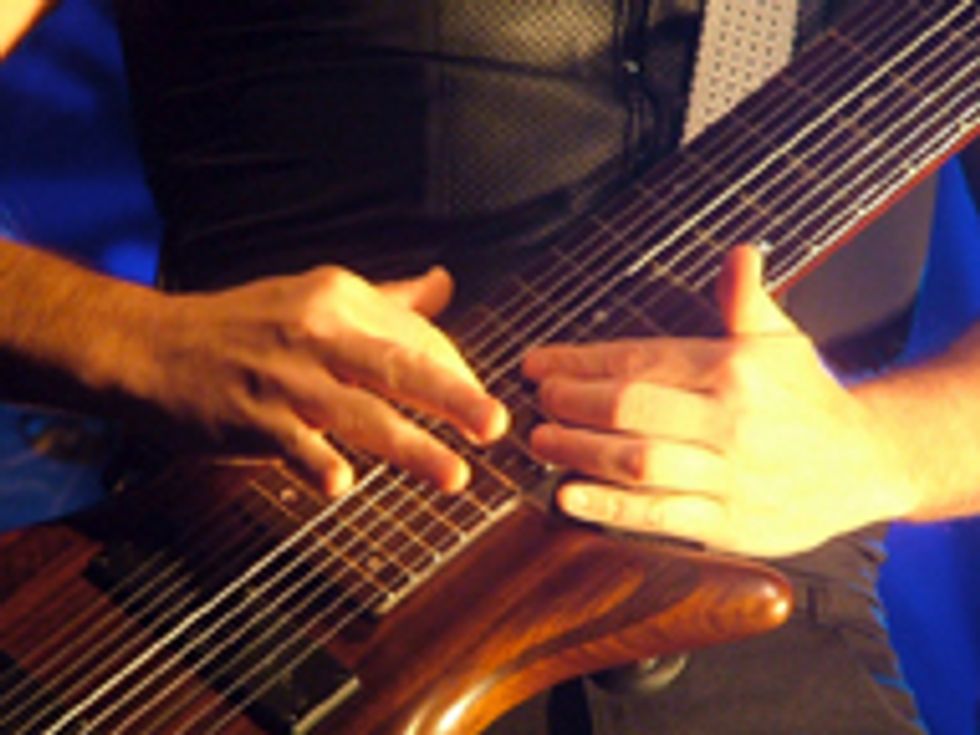 Trey has a home remedy for another of the challenges – the sonic sensitivity required for touch instruments has a pernicious side effect: any inadvertent contact with a string produces a sound, and the release of a string will tend to sound the open string. Trey carefully weaves a special fiber just below the nut to mute the open strings, much as the felt dampers prevent unstruck piano strings from sounding, and he uses additional muting to isolate particular strings when recording. “I also have an almost unconscious approach to using my lower hand, whichever one that is, to mute as much as possible,” he adds.
Trey has a home remedy for another of the challenges – the sonic sensitivity required for touch instruments has a pernicious side effect: any inadvertent contact with a string produces a sound, and the release of a string will tend to sound the open string. Trey carefully weaves a special fiber just below the nut to mute the open strings, much as the felt dampers prevent unstruck piano strings from sounding, and he uses additional muting to isolate particular strings when recording. “I also have an almost unconscious approach to using my lower hand, whichever one that is, to mute as much as possible,” he adds.That “unconscious” muting technique is representative of the playing-technique challenges that confront musicians as they take up any touch instrument. “Your finger technique requires you to do something that is not applicable on any other instrument,” Trey says. “On a keyboard, you move left to right across in front of you, which we have, too, but also we have forward and backwards. You need to be able to move and articulate each finger very specifically, and you have to hit the string in the right spot. You want to hit the string right behind the fret. When I say it, it’s hard to believe we can actually do it, but it’s not as crazy as it sounds.
“You are using your fingers in a completely different way. I wish I could say it’s easy, but it’s not. You’ve got to have energy behind it to get the sound, but you have to use the right use of energy of the fingers. Even though it’s light, it’s got to be the right force. And that force determines the quality of the sound.”
Once a musician has come to grips with the physical challenges of the touch technique, they find that the Warr Guitar is remarkably versatile. Randy Strom is an example of a musician who uses the range of the instrument to play like a jazz pianist – or, in guitar terms, to play bass and melodic lines simultaneously. Other artists have used the instrument to play everything from Indian ragas to the avant-metal of Behold the Arctopus».
The Future of Touch Style
At this point musicians have developed at least 26 documented tunings for the Warr Guitar, using both crossed and uncrossed string deployments. Some tunings expand the range of the instrument, while others may make playing patterns more symmetrical; some are more reminiscent of traditional guitar tunings, while others take the instrument into entirely new territory. Some artists are even experimenting beyond stereo, using three sets of strings on one neck, processed through three separate channels.
|
Although Trey is the Warr Guitar’s most prominent artist, his approach to the instrument is decidedly idiosyncratic. “You build your own genre as you go,” he says. “I kind of treat it more as an African instrument or a big marimba or mbira – or as a single instrument that just has that incredible range. I’m not interested in being the bass player and the soloist at the same time. It’s hard enough doing one thing at once – I don’t need to be doing two things at once. I’d rather be creating new music instead of spending all the time that’s necessary to be able to be good at that thing. What those players do is quite amazing, but it’s just not what I’m interested in doing.”
So what is the next step in the Warr Guitar evolution? About five years ago, while Trey was still with King Crimson, he began returning to the Warr Guitar’s roots – playing with the instrument horizontal on a stand – and that approach has deepened with his new projects. “Not only is it easier on the wrists, but the kind of dynamic you can get, with the wrists in a straight line from the arms and letting gravity help with the fingers, and ability to shape a musical phrase – it doesn’t even compare,” he says. “In the guitar position the stress on the hands keeps it from happening.
“The dynamics just expand. It’s terrifying, actually. It’s like going back to kindergarten. Oh my god, I’m thinking, I don’t even have the technique to deal with this kind of dynamic range. I’ve been researching keyboard technique and I’ve discovered some interesting things. So we are in the process of completely destroying the instrument again.”
At the same time that the upper limits of design and engineering are being expanded – with the corresponding prices – Warr Guitars is also working on simpler, less-expensive instruments to make the touch-guitar experience accessible to young musicians with more limited means.
And, although Mark is playing his cards close to the vest, he promises that there are other exciting new developments that are about to emerge. Stay tuned.
For more information:
Trey Gunn
Warr Guitars
| <<<Back |
| Page: 1, 2 |










![Rig Rundown: Russian Circles’ Mike Sullivan [2025]](https://www.premierguitar.com/media-library/youtube.jpg?id=62303631&width=1245&height=700&quality=70&coordinates=0%2C0%2C0%2C0)




